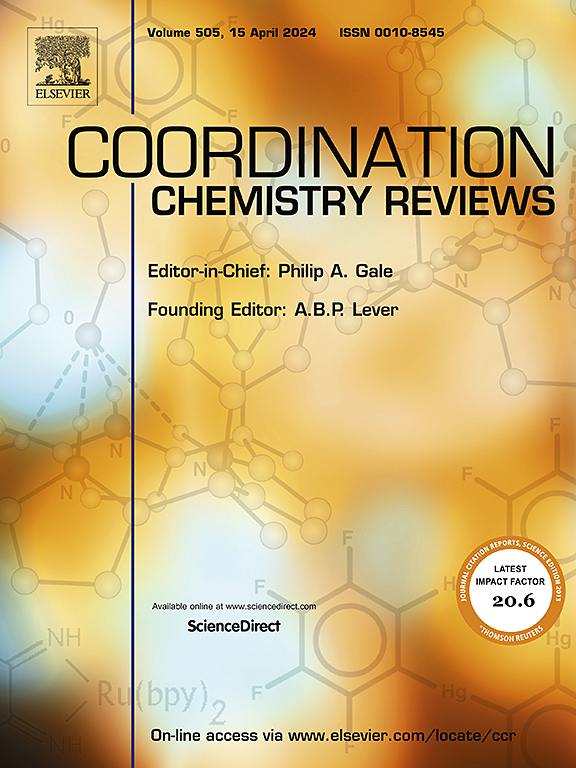GSH-responsive nanomedicine for disease smart imaging and therapy
IF 20.3
1区 化学
Q1 CHEMISTRY, INORGANIC & NUCLEAR
引用次数: 0
Abstract
Glutathione (GSH) is a main component of the antioxidant system in organisms, scavenging reactive oxygen species and protecting cells from oxidative stress, thus playing important roles in many physiological processes. An imbalance of GSH level within the microenvironment is a characteristic of many diseases, which makes this biochemical property of the disease site be exploited as a potential target for disease treatment. Recent advances in nanomedicine have led to a proliferation of nanomedicines targeting GSH, with which a variety of emerging imaging and therapeutic modalities have been achieved on multiple disease models. Here, we review recent advances in nanomedicine for diseases characterized by imbalanced GSH levels. First, the design strategies and chemical mechanisms of GSH-responsive nanomedicine are described. Then, we provide a systematic review of the application of GSH-responsive nanomaterials for disease smart imaging including fluorescence imaging, photoacoustic imaging, magnetic resonance imaging and computed tomography imaging. Moreover, GSH-responsive nanomaterials-based tumor smart therapeutic strategies including chemotherapy, phototherapy, chemo-dynamic therapy and ferroptosis are detailedly introduced. An in-depth discussion of current challenges and future prospects for GSH-responsive nanomedicine are given at the end of this review.求助全文
约1分钟内获得全文
求助全文
来源期刊

Coordination Chemistry Reviews
化学-无机化学与核化学
CiteScore
34.30
自引率
5.30%
发文量
457
审稿时长
54 days
期刊介绍:
Coordination Chemistry Reviews offers rapid publication of review articles on current and significant topics in coordination chemistry, encompassing organometallic, supramolecular, theoretical, and bioinorganic chemistry. It also covers catalysis, materials chemistry, and metal-organic frameworks from a coordination chemistry perspective. Reviews summarize recent developments or discuss specific techniques, welcoming contributions from both established and emerging researchers.
The journal releases special issues on timely subjects, including those featuring contributions from specific regions or conferences. Occasional full-length book articles are also featured. Additionally, special volumes cover annual reviews of main group chemistry, transition metal group chemistry, and organometallic chemistry. These comprehensive reviews are vital resources for those engaged in coordination chemistry, further establishing Coordination Chemistry Reviews as a hub for insightful surveys in inorganic and physical inorganic chemistry.
 求助内容:
求助内容: 应助结果提醒方式:
应助结果提醒方式:


